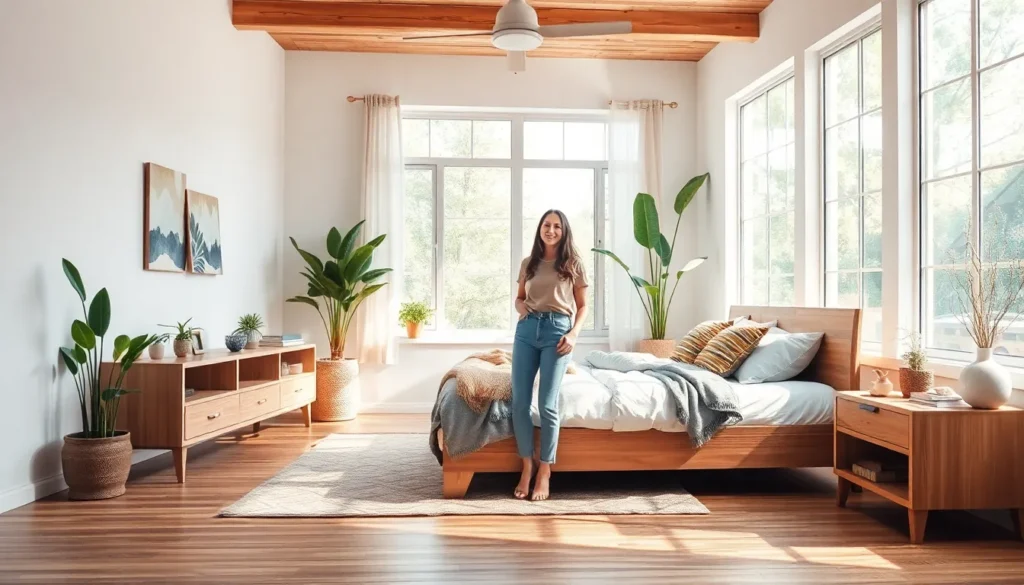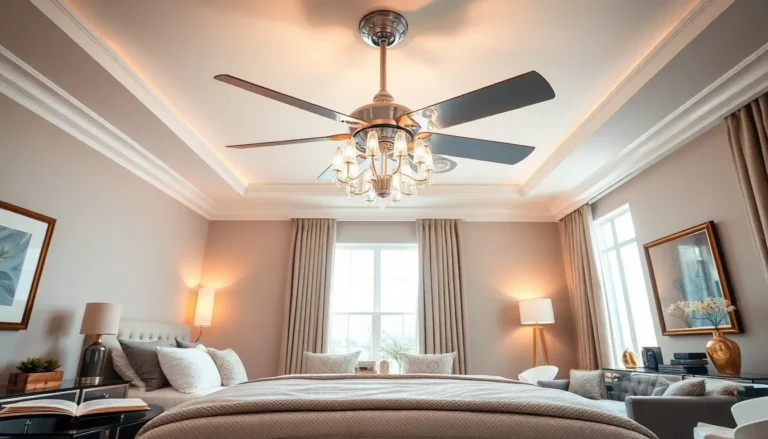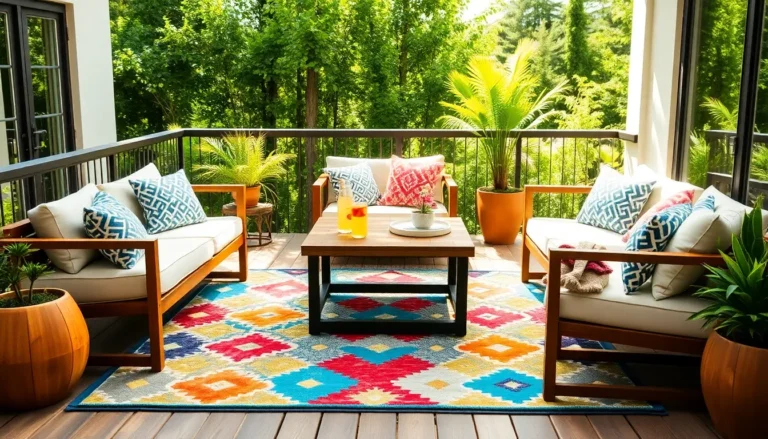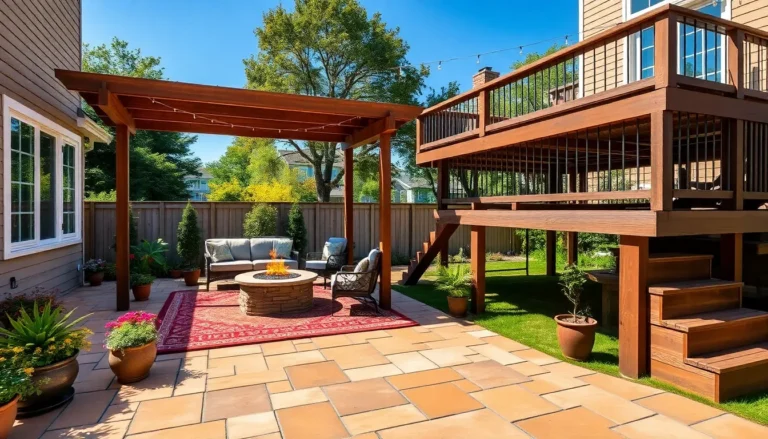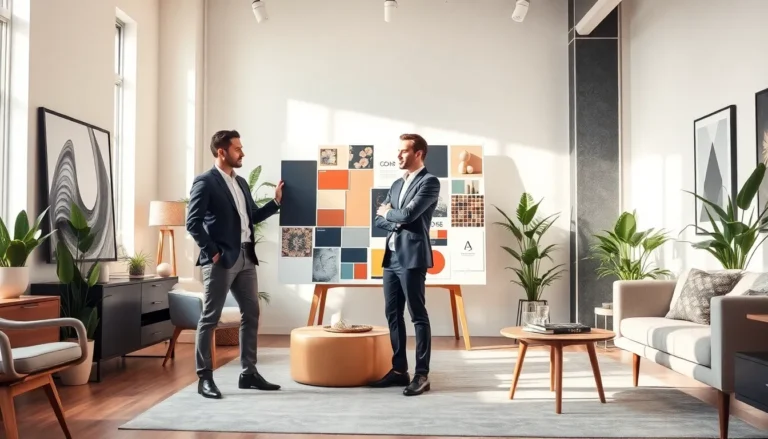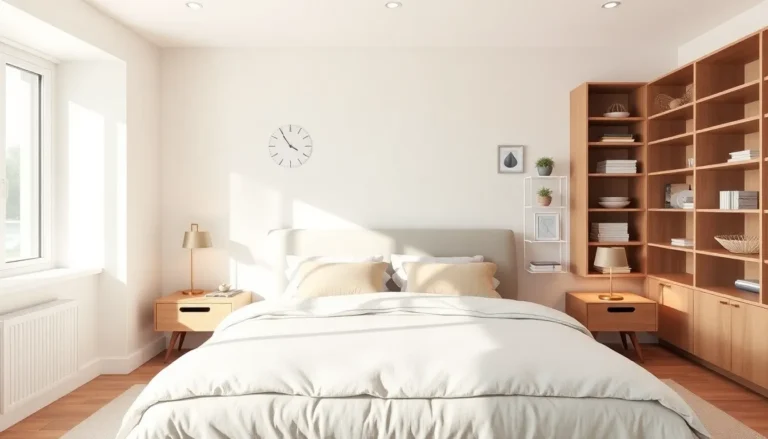Table of Contents
ToggleIn a world where the planet’s in crisis and people are still debating whether to recycle their pizza boxes, bedroom eco-design emerges as a stylish solution. Imagine transforming your personal oasis into an eco-friendly haven that not only looks good but also feels good for Mother Earth. It’s like giving your bedroom a green makeover without sacrificing comfort or style.
Overview of Bedroom Eco-Design
Bedroom eco-design creates stylish, sustainable environments focused on minimizing environmental impact. This approach prioritizes comfort while embracing eco-friendly choices.
Importance of Sustainability
Sustainability reduces harm to the environment and promotes health. Incorporating eco-friendly practices leads to decreased waste and lower energy consumption. Such changes enhance indoor air quality by using non-toxic materials and finishes. Choosing sustainable options supports local economies by sourcing materials from nearby suppliers. Enhancing the longevity of products also reduces the need for frequent replacements, conserving resources. Sustainability in bedroom design fosters a connection between personal spaces and larger environmental goals, benefitting both individuals and communities.
Key Principles of Eco-Design
Key principles of eco-design guide the creation of sustainable bedrooms. Selecting renewable materials, such as bamboo and reclaimed wood, contributes to a healthier planet. Prioritizing energy efficiency, through the use of LED lighting and high-quality insulation, minimizes energy consumption. Designing for durability ensures longevity in furniture and fixtures, thus reducing waste over time. Incorporating natural ventilation rather than relying solely on mechanical systems improves air quality while saving energy. Lastly, focusing on minimalism helps maintain an uncluttered, peaceful space that promotes well-being.
Eco-Friendly Materials
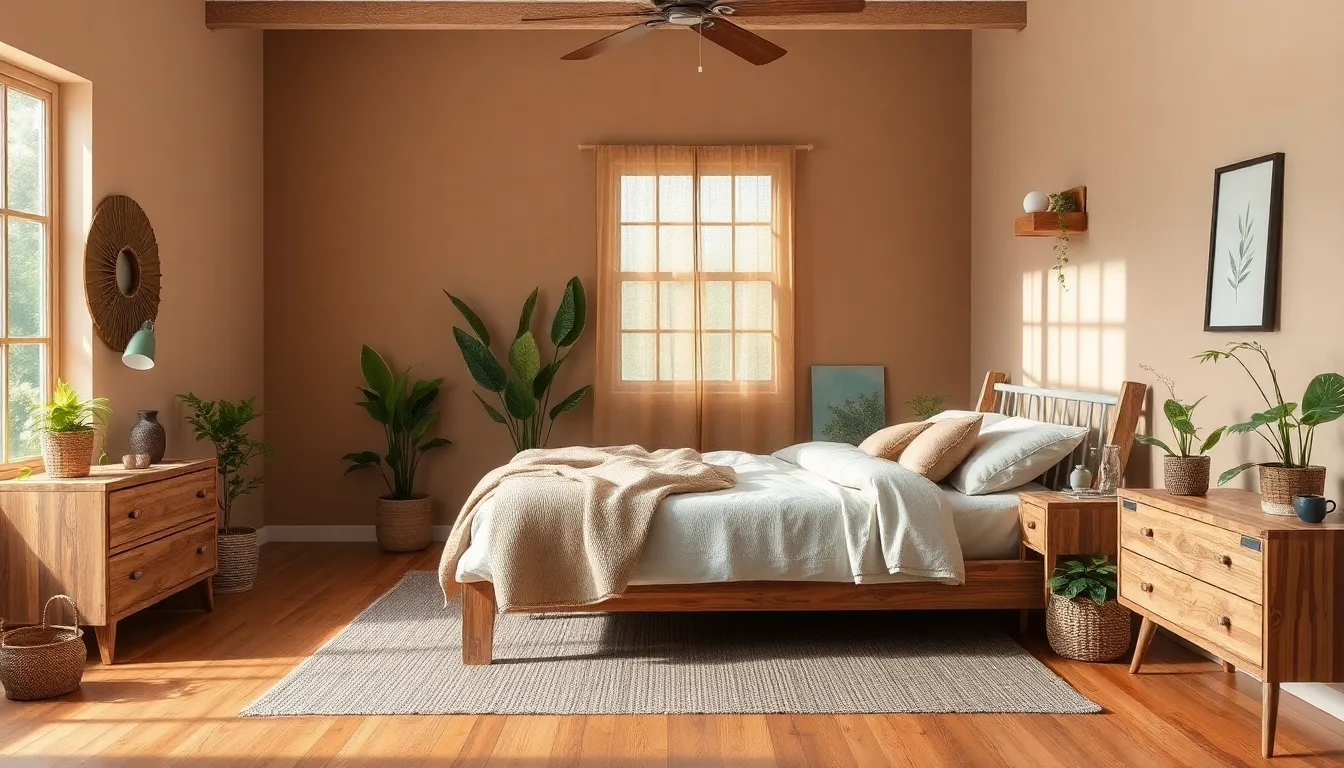
Selecting eco-friendly materials plays a crucial role in bedroom eco-design. These materials contribute to sustainability while ensuring comfort and aesthetics.
Sustainable Flooring Options
Bamboo represents a renewable resource that grows quickly and needs minimal pesticides. Cork also offers numerous benefits; it’s harvested from the bark of cork oak trees, making it highly sustainable. Reclaimed wood adds character and reduces waste, allowing homeowners to utilize existing resources. Linoleum, made from natural materials, provides durability and is biodegradable. These options not only enhance the environmental footprint but also create a warm atmosphere.
Environmentally Safe Paints and Finishes
Low-VOC paints significantly reduce indoor air pollution, promoting a healthier living environment. Natural finishes, such as oils and waxes, prevent harmful chemicals from entering homes while providing beautiful surface protection. Plant-based stains contribute to sustainability by utilizing renewable resources for coloring. Water-based sealants offer durability while minimizing toxic emissions. These choices help maintain a safe, inviting bedroom space, supporting eco-conscious living.
Energy Efficiency in Bedroom Design
Energy efficiency plays a vital role in eco-design, promoting sustainable living while ensuring comfort. Implementing smart solutions helps reduce energy consumption in bedrooms.
Smart Lighting Solutions
Installing smart lighting contributes significantly to energy savings. These systems offer features like motion sensors, allowing lights to turn off automatically when the room is unoccupied. Dimming options enhance ambiance while lowering energy use, and LED bulbs consume up to 75% less energy than traditional incandescent bulbs. Additionally, programmable timers provide control over lighting schedules, adapting to the needs of the user.
Energy-Efficient Appliances
Selecting energy-efficient appliances helps minimize energy consumption in bedrooms. Energy Star-rated devices consume less energy, which reduces both utility bills and carbon footprints. Items like energy-efficient ceiling fans circulate air effectively, maintaining comfort without excessive energy use. Moreover, utilizing power strips for electronics prevents phantom energy loss when devices are not in use, ensuring that every watt counts toward a more sustainable bedroom environment.
Biophilic Design Elements
Biophilic design integrates natural elements into the bedroom, enhancing both aesthetics and wellness. Incorporating nature evokes a serene atmosphere while fostering a connection to the outdoors.
Incorporating Nature into the Bedroom
Many strategies exist for bringing nature indoors. Utilizing large windows for natural light promotes warmth and openness. Organic shapes in furniture create a soothing environment. Natural materials, such as wood and stone, provide texture and visual interest. Incorporating water features or natural sounds improves the ambiance. Artwork featuring landscapes or botanical themes can also enhance the natural feel while reinforcing the connection to the outside world. Each element contributes to a harmonious and inviting space.
Benefits of Indoor Plants
Indoor plants offer numerous benefits for bedroom environments. They improve air quality by filtering toxins and releasing oxygen. Plants such as snake plants and pothos thrive in low light, making them ideal for various settings. Some varieties, like lavender, even serve to reduce stress and promote relaxation. Regular interactions with plants can elevate mood and enhance overall well-being. Furthermore, the presence of greenery adds vibrancy and life to the room. Each plant serves as a visual focal point, enhancing both aesthetics and health.
Tips for Implementing Bedroom Eco-Design
Implementing bedroom eco-design fosters an inviting environment while promoting sustainability. Here are practical strategies to enhance eco-friendliness without compromising style.
Budget-Friendly Ideas
Selecting secondhand furniture reduces waste and costs. Thrift stores and online marketplaces often offer unique pieces with character. Opting for durable materials ensures longevity, minimizing the need for replacements over time. Choosing energy-efficient LED bulbs helps lower energy bills while providing ample lighting. Incorporating handmade or artisan decor adds a personal touch while supporting local artisans. These choices collectively create a cohesive and eco-friendly bedroom that is both stylish and cost-effective.
DIY Eco-Design Projects
Creating custom furniture from reclaimed wood transforms old materials into new treasures. Crafting wall art using recycled items can personalize the space while showcasing creativity. Upcycling old textiles into decorative pillows or throws keeps materials out of landfills. Designing a vertical garden with repurposed containers brings nature indoors and improves air quality. Building a compost bin in the corner allows for sustainable waste management while enriching indoor plants. Each of these projects enhances the bedroom’s eco-design, contributing to a sustainable atmosphere while reflecting individual style.
Embracing bedroom eco-design not only enhances personal spaces but also contributes to a healthier planet. By making thoughtful choices in materials and incorporating nature, individuals can create inviting environments that reflect their values. Sustainable practices lead to improved air quality and reduced environmental impact while maintaining aesthetic appeal.
As more people prioritize eco-friendly living, the bedroom can serve as a sanctuary that embodies comfort and sustainability. Adopting these principles allows for a harmonious balance between style and responsibility, inspiring others to consider the benefits of eco-design in their own homes. With each small change, the journey toward a more sustainable lifestyle begins.

